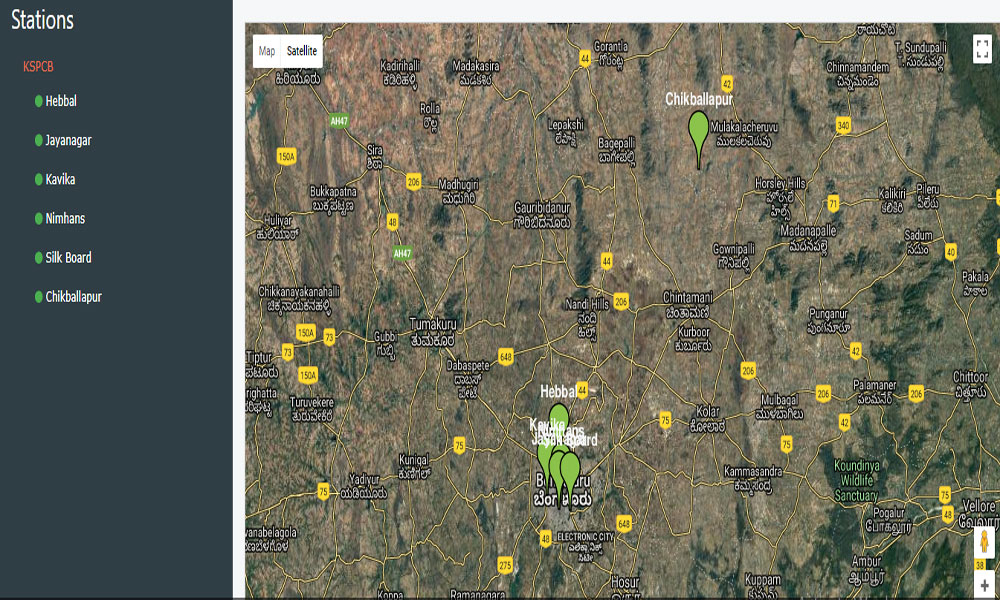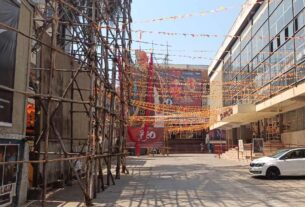The setting up of air-quality monitors has been delayed by months.
Bangalore, April 11, 2018: Only six out of a thousand planned air-monitoring sensors have been set up in the city —three months after funds were allocated—as air quality deteriorates.
The website of the Karnataka State Pollution Control Board shows air quality data from only six placesin the city—Hebbal, Jayanagar, Kavika, Nimhans, Silk Board, and Chikballapur. Furthermore, automated pollution data is not available all the time.
Dr. Nagapath, a senior scientist and executive on the Karnataka State Pollution Control Board, said the board is working on tackling the condition, and will come up with projects to address the air pollution problem.
The BBMP received $10 million after signing a Memorandum of Understanding (MoU) with the C40 Cities Climate Leadership (global group of world’s greatest cities to tackle emission of greenhouse gas and climate change) for tackling greenhouse gas emission and climate change, in Bangalore city. BBMP agreed to install over than 1000 air quality-monitoring sensors in the city.
Air Quality Index reports show the quality of air in the city, the polluted areas and the pollutants. The City Railway Station is one of the most polluted placesas recorded by the Central Pollution Control Board.
While the data from December 2017 shows a satisfactory level of air-quality in the city, the manually monitored records of the city are missing from July 2017 to November 2017, . There are no records from January 2018 to March 2018 either.
According to the pollution control boards, a ‘satisfactory’ level of air-quality leads to minor discomfort in breathing to older and sensitive people.A ‘moderate’ level of air-quality causes major discomfort in breathing to people ailing from several lung-diseases and also to cardiac patients, people with asthma and dust allergy, and children.
In areas like Silk Board, Hebbal, and Jayanagar, the air-quality level has mostly stayed moderate according to the records from the last week.
Below is a slide, containing the air-quality levels from last week in the above mentioned places:
Other places in the city, that fall under the dangerous category are the City Railway Station, Kadebesanahalli, BTM Layout, among other places.
“Bangalore has changed quite a bit in the last two decades. Air pollution is going to worsen 20 times about 2000 per cent by 2030. The government has not done anything befitting to address the issue. We all know where it is coming from, so, that categorization and causality is not rocket science. This is going to be very detrimental in the coming years,” said Kshitij, an environmentalist from Bangalore.
Kshitij pointed out that only a few air-monitoring sensors have been installed, such as the one in BTM Layout and that the installations or the initiative itself is quite a late decision on the part of the government
Apart from Bangalore, Delhi is one of the Indian cities which has joined hands with the C40 initiative.
“Green Fuel, such as CNG and LPG, is a pivotal project which actually helped in curbing the onslaught of air pollution in Delhi. But, then, the lack of administrative and political will, forced the Supreme Court of India and the National Green Tribunal to intervene in the matter. Environmental Protection Authority, a body empowered by the Supreme Court, submitted before the NGT, a plan to tackle air pollution. It advised a total ban on diesel generator sets for a period of four months. A ban on construction activities during the winter has also been enforced,” stated Rahul Kumar, an advocate at the Supreme Court.
He added, “It’s already at its worst. The air is not fit to breathe. Asthma and other respiratory diseases are common. Local factors contribute a lotfor deterioration of ambient air quality . Such factors are vehicular pollution, industrial emissions , construction activities. One major yet seasonal factor is stubble burning in Haryana, UP, and Punjab which happens after the monsoon and just before the onset of winter. It makes Delhi a gas chamber as rightly observed by the Delhi High Court.”
As air pollution worsens, and has already reached an alarming condition, the citizens await better days —hoping for the government authorities to address this global danger thoughtfully and effectively.




